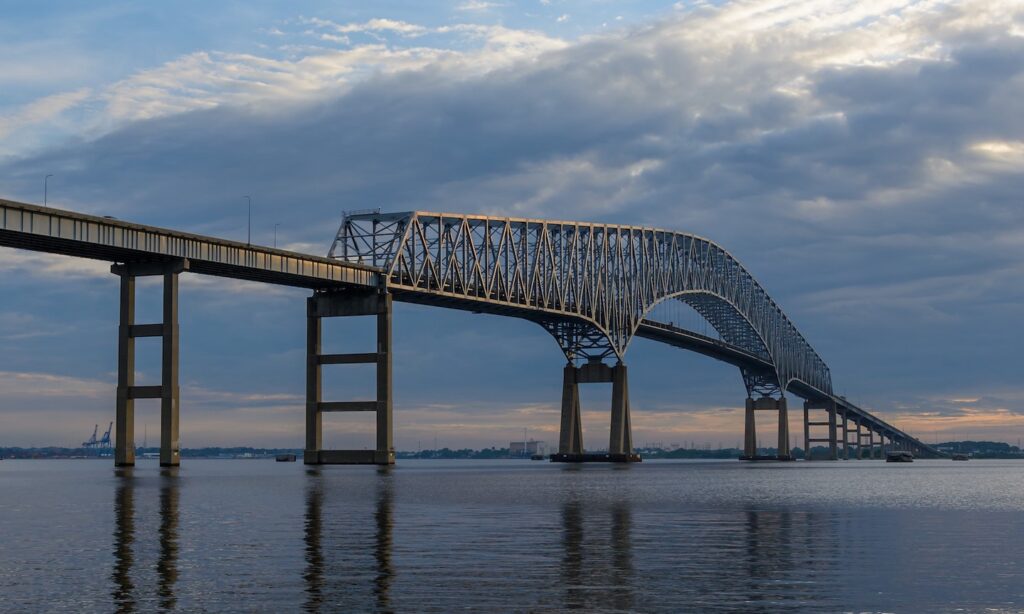In the early hours of March 26, 2024, the MV Dali container ship collided with the Francis Scott Key Bridge in Baltimore, Maryland. The bridge collapsed in less than a minute, sending cars, machinery, cargo, and even people into the cold depths of the Patapsco River.
Beyond the human cost of the collapse, the economic and social impacts are evident; its closure directly affects the local and national economy. Billions of dollars in goods processed through the port now face significant obstacles, which could affect employment and income in the region.
To minimize disruptions in the supply chain, New Jersey Governor Phil Murphy and New York Governor Kathy Hochul issued a joint statement stating that they can transport additional cargo to ports in their states.
The recent collapse of the Francis Scott Key Bridge has not only caused human tragedy and logistical disaster but has also shaken the world of insurance. This event, considered one of the largest losses in the history of marine insurance, has the potential to redefine the landscape of insurance costs for years to come.
Insurance implications
According to reports, this disaster could cost insurance companies up to $4 billion, and changes in maritime insurance rates are likely. These changes could be significant because insurers will seek to recoup the losses they face.
With this bridge collapse, approximately 80 different reinsurers contribute to covering the losses. These are the companies that help insurers cover the risks they face. While this may not dramatically affect each one individually, it is a record loss that will resonate in the insurance market. This is likely to also influence the rates and policies that insurance companies offer to their customers.
Here are some of the implications we will see unfold:
1. Increase in insured losses: Estimated insured losses between $2 billion and $4 billion will pressure insurers and reinsurers to reconsider their pricing strategies. This increase in claims could result in higher insurance costs for consumers.
2. Pressure on coverage prices: The magnitude of the losses, combined with other recent events, could result in higher prices for maritime insurance coverage worldwide. This would affect not only companies related to maritime transportation but also end consumers due to the increase in costs of transported goods.
3. Claims for damages and liabilities: Insurers face a complex web of policies involved in the disaster, which could result in a prolonged period of claims and adjustments. Additionally, additional liabilities related to deaths and business interruptions could lead to increased insurance costs.
4. Impact on reinsurance availability: The reinsurance market, which helps distribute risks, will bear the brunt of the losses. This could affect the availability and costs of reinsurance, which in turn would have a domino effect on insurance costs in different sectors for businesses.
5. Challenges for the insurance industry: Insurers will have to manage an increase in claims and a growing cost environment. This could lead to a reassessment of risk models and possible digital transformation to improve efficiency and response to unforeseen events.
Conclusion
The collapse of the Francis Scott Key Bridge presents significant challenges not only for insurers but also underscores the importance of robust insurance coverage against unforeseen disasters. As insurers and reinsurers navigate the aftermath of this tragedy, the insurance market as a whole may experience adjustments in rates and coverage terms. Furthermore, the impact of this event on local economies and communities serves as a stark reminder of the critical role infrastructure plays in livelihoods and facilitating trade. Going forward, collaboration between government agencies, insurers, and other stakeholders will be essential to mitigate risks and build resilience against future incidents.





